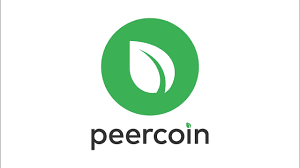Most people currently venturing into cryptocurrency may not know about some of the currencies which helped create this ecosystem. Peercoin is one of those currencies which a lot of people tend to forget about, even though it is still a thing. There are a lot of interesting features of Peercoin which people should be paying attention to, even in 2018.
Peercoin in a nutshell
One of the main reasons why people should pay attention to Peercoin is that it was the world’s first proof-of-stake currency. Even though thousands of clones have emerged since, PoS would not necessarily be as popular as it is right now without Peercoin. It also kept the annual take percentage rather low, as PCC holders receive a 1% return per annum. This currency was clearly built to last, even though it has not succeeded in gaining much long-term traction.
The Technical Side of Peercoin
Developing Peercoin or tools built on top of this ecosystem is done through the Peer4commit hub. This centralized development portal lets developers select projects to work on in exchange for PCC rewards. Users can also contribute to projects by donating some Peercoin, which is pretty interesting. New ideas can be submitted and solicit donations to support their development in the future. Peer4commit is an interesting way to promote community-funded development of a cryptocurrency.
Peercoin also utilizes a feature known as checkpointing. Even though this option is not mandatory, it does protect the network from double-spend attacks and makes future upgrades of the Peercoin protocol go a lot more smoothly. Decentralization of Peercoin is now on the same level as Bitcoin, even though the checkpointing feature is still available through the client for those who see merit in this approach.
There is also an option to run a full Peercoin node in a matter of seconds through the Peerbox service. Thanks to the lightweight operating system solution powering this venture, it’s possible to turn any sort of computing device into a proper node. This even works for cheaper devices such as the Raspberry Pi and similar developer boards. Thanks to some built-in tools, Peerbox is by far one of the more user-friendly ways of setting up a cryptocurrency full node as of right now.
Using PCC as a Currency
For merchants looking to accept Peercoin, there is a nice integration guide on the project’s website. Unfortunately, it seems very few merchants have incorporated Peercoin payments as of right now, even though that doesn’t mean there are no use cases for this currency. For now, it may be a bit difficult to find any service providers accepting Peercoin payments, but rest assured there is still some interest in what this currency has to offer.
The Road Ahead for Peercoin
Even though Peercoin has been around since 2012, the currency is still being actively developed. Multisignature minting protocol support will be introduced in the very near future. Moreover, the transaction timestamp will be removed to make the currency more compatible with Bitcoin-related services. Payment channels are also on the horizon for Peercoin, although not before late 2019 at the earliest. The team is also working on the PeerAssets solution, which allows for the creation of new cryptocurrency assets on top of Peercoin. It also reduces node requirements and employs a Pay-to-Tag-Hash system. This will bring some competition to Ethereum, NXT, Counterparty, Omni, and other parties active in the world of asset creation.

